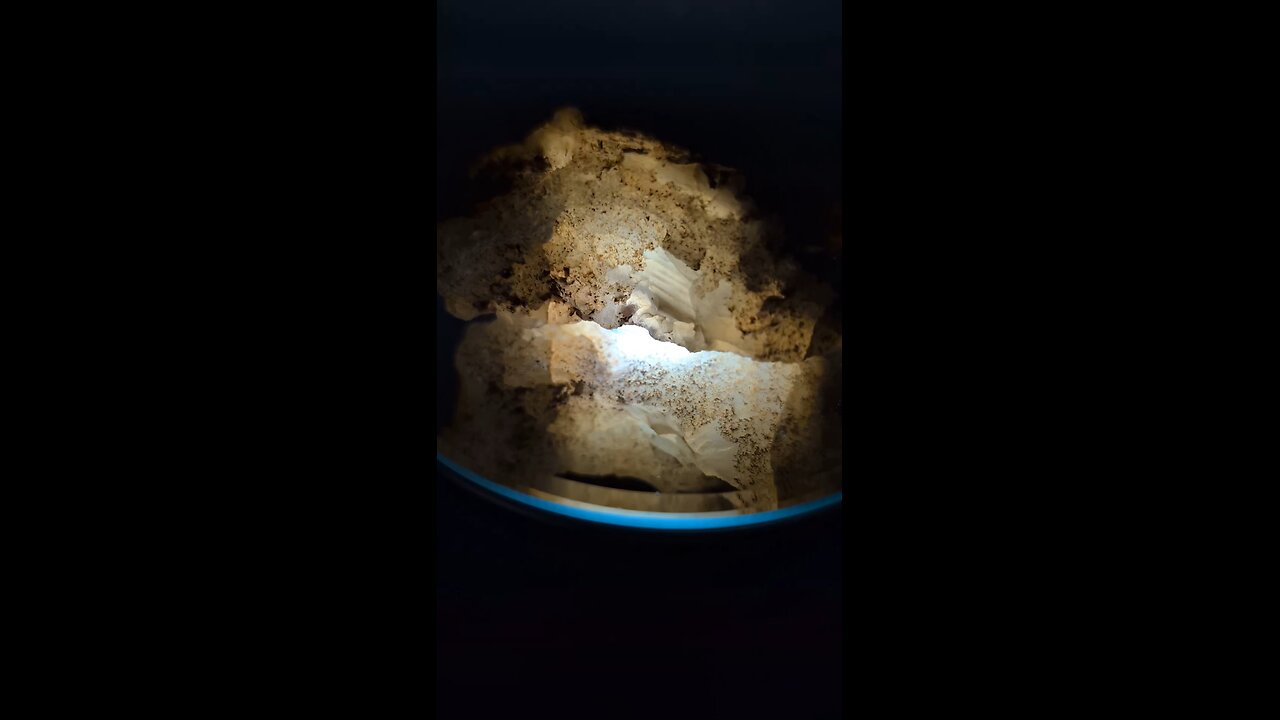Premium Only Content

Agate Glow!
Agate is a microcrystalline variety of quartz, specifically a form of chalcedony, known for its fine grain and bright color patterns. Here are some key points about agate:
Formation: Agate forms in volcanic and sedimentary rocks. It often begins as a cavity in the rock, which then gets filled with layers of silica-rich water. Over time, this solution deposits minerals in layers, creating the characteristic banding of agate. This process can take millions of years.
Appearance: Agate is famous for its beautiful, often banded patterns of color, which can range from translucent to opaque. Colors include white, blue, red, black, yellow, and brown among others, with the patterns formed by the successive layers of chalcedony being deposited. Sometimes, agates can be found with inclusions like moss (moss agate) or even fossils.
Types of Agate:
Banded Agate: Shows clear, concentric bands of color.
Moss Agate: Contains mineral inclusions that look like moss or foliage.
Dendritic Agate: Similar to moss agate but with tree-like or branch-like patterns.
Fire Agate: Contains iridescent layers that appear to glow with fiery colors.
Lace Agate: Features lace-like patterns, most notably in Blue Lace Agate from Namibia.
Crazy Lace Agate: Known for its wild, chaotic patterns of colors.
Locations: Agates are found worldwide, but some of the most famous locations include Brazil, Uruguay, Mexico, Germany, Madagascar, and the United States (particularly in Oregon, Washington, and Idaho).
Uses:
Jewelry: Due to its beauty when polished, agate is widely used in jewelry like rings, pendants, and beads.
Decorative Items: Larger pieces or slices are used for decorative objects, bookends, or as display pieces.
Metaphysical: In metaphysical practices, agate is believed to have various healing properties, like balancing physical, emotional, and intellectual energy, and promoting strength and courage.
Cultural Significance: Agate has been used since ancient times; it was prized in Ancient Egypt for amulets and seals, in Greece and Rome for intaglios and cameos, and by many other cultures for its beauty and supposed protective qualities.
Cutting and Polishing: When cutting agate for jewelry or display, lapidaries look for the most visually appealing patterns. The process involves sawing, grinding, and polishing to bring out the internal beauty of the stone.
Agate's diversity in color and pattern, combined with its durability, makes it one of the most sought-after stones in the world of gemology and mineral collecting.
-
 22:13
22:13
iCkEdMeL
6 hours ago $7.34 earnedMass Shooting at Wedding Reception — Witnesses Say Shooter Yelled “Free Palestine”
57K28 -
 0:36
0:36
Danny Rayes
2 days ago $2.67 earnedFacebook Needs To Be Stopped...
42.5K12 -
 LIVE
LIVE
Total Horse Channel
21 hours agoAMHA World Show 2025 9/21
567 watching -
 1:29:02
1:29:02
Game On!
1 day ago $7.30 earnedTHEY'RE BACK! NFL Wise Guys Return For Week 3 BEST BETS!
59.6K4 -
 6:16
6:16
China Uncensored
6 hours agoHow Trump Plans on Stopping Russia and China—Without Firing a Shot!
217K40 -
 33:13
33:13
Ohio State Football and Recruiting at Buckeye Huddle
18 hours agoOhio State Football: 10 Things We Learned Watching Washington's Win over Colorado State
115K -
 1:14:04
1:14:04
NAG Entertainment
19 hours agoKickback w/ Leon - Rocket League: Road to GC
69.5K -
 30:13
30:13
Degenerate Plays
6 hours ago $0.87 earnedBritish Insults Are Hilarious - Call of Duty: Modern Warfare 2 (2009) : Part 2
42.2K2 -
 6:42
6:42
NAG Daily
23 hours agoCharlie Kirk: His Words. His Vision. His Movement.
60.6K27 -
 21:42
21:42
Jasmin Laine
1 day ago“Kimmel Isn’t a Victim, Charlie Kirk Was”—Gutfeld OBLITERATES Liberal Media Over FAKE Outrage
54.7K35